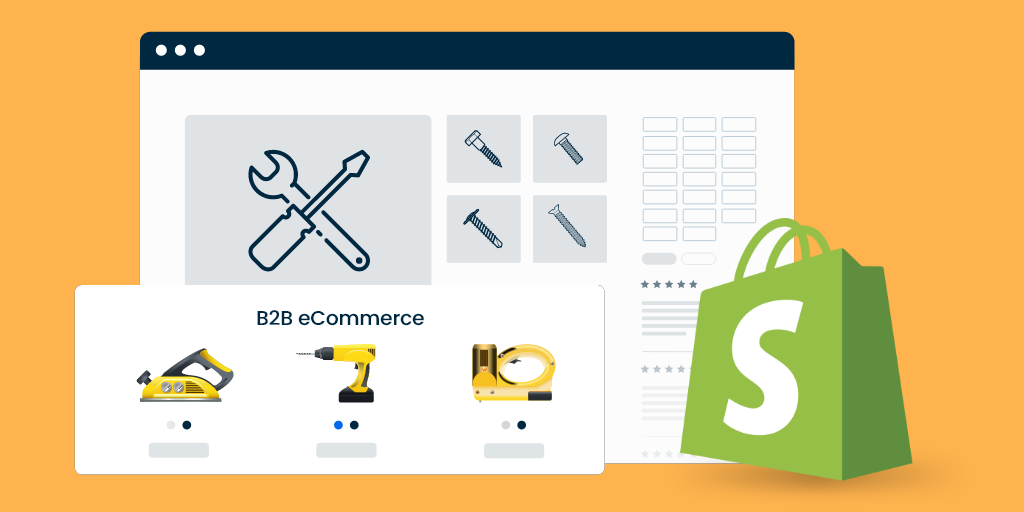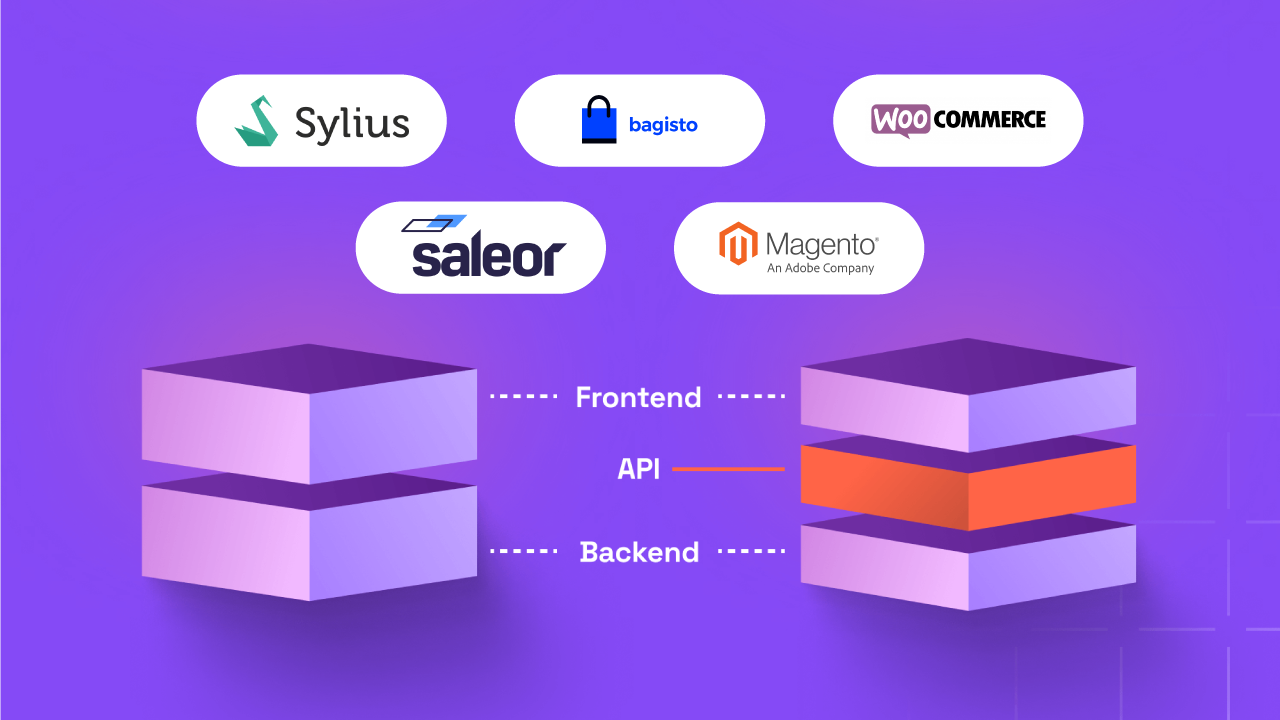Top 7 Headless eCommerce Platforms to Consider in 2023

What is a headless Commerce platforms? As the eCommerce industry continues to evolve, headless commerce has emerged as a major trend that offers a range of benefits to businesses. In our previous blogs, we discussed the reasons to consider headless eCommerce and the advantages it can provide — from improving customer experiences to enhancing flexibility and agility.
In this blog, we will explore some of the top headless platforms available today, each offering unique features and capabilities to help businesses scale and grow.
What is Headless Commerce?

Before we dive into the main topic, let’s recap what headless commerce is all about. Headless commerce refers to a system architecture in which the frontend and backend layers of an eCommerce website or application are decoupled from each other.
This means that the frontend layer, which includes the user interface and customer experience, can operate independently of the backend eCommerce functionality. By using APIs to communicate with the backend, the headless architecture offers businesses unparalleled flexibility and scalability. It enables businesses to deliver highly personalized and unique customer experience to its customers.
What is a Headless Commerce Platform?
In simple terms, a headless commerce platform is software that is designed to work with a headless commerce approach. It operates as a decoupled system, which means it separates the front-end and back-end of a website. This architecture makes it easier for the two systems to communicate with each other. A headless commerce platform uses APIs for data orchestration, resulting in faster and more responsive processes.
In recent times, there is a lot of buzz around headless. Saying that headless commerce became the response to the market challenges associated with the monolith platforms — such as the high risk of failure when applying even the smallest change or tedious, repetitive work and of course slow, inefficient performance — won’t be wrong. So, when it comes to headless commerce platforms, they are designed to drive tech implementations for business benefits.
Think about it: customers today are consuming content via multiple touchpoints. Since the mobile revolution, the old way of executing the online business has become a tedious activity for both, developers and marketers. That is one reason why headless commerce became the easiest gateway from the burdens caused by the decoupled system.
With the increasing popularity of the headless system, there are numerous platforms that offer diverse headless features. The question is, how to choose the right headless platform that provides a pure headless experience?
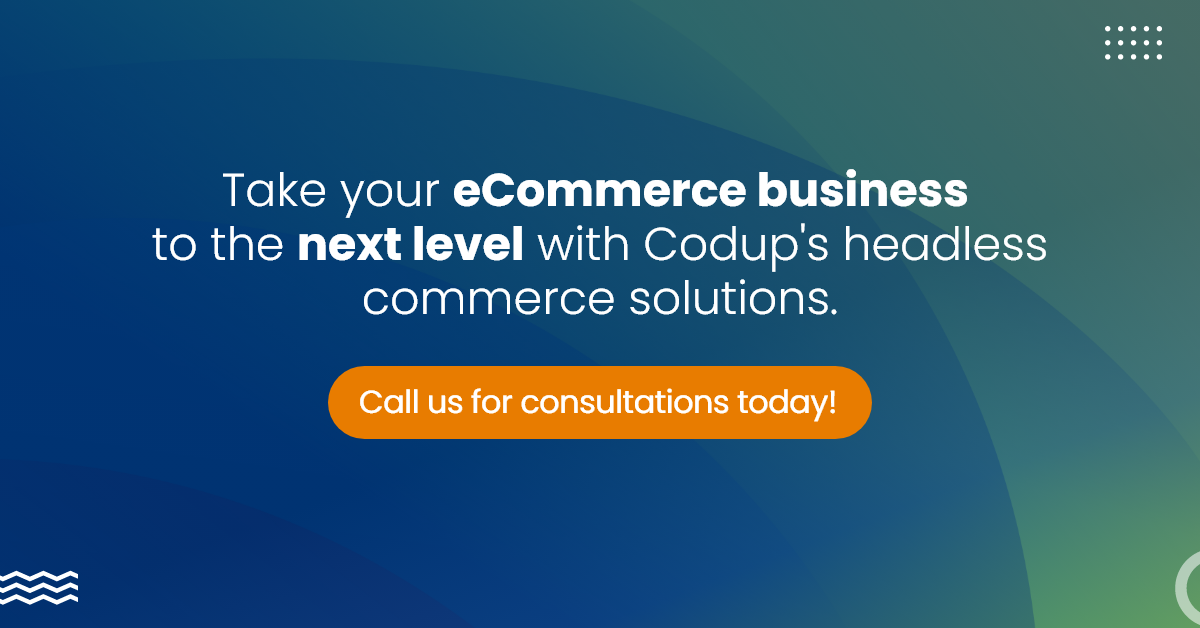
To ease your decision, we have highlighted some features of some of the best headless commerce platforms.
What to Look for in a Headless eCommerce Platform?
1. Integration Capabilities
Integration capabilities are essential for headless commerce platforms to provide a seamless and efficient experience for both customers and businesses. By ensuring that APIs work efficiently, integrations create a smooth storefront experience while the back end accurately handles business operations, such as order and inventory management. This synergy between the front-end and back-end of the website ensures a better overall experience for businesses and customers alike.
Headless commerce platforms also make it easier to integrate third-party analytics tools to track and monitor customer behavior, analyze sales data, and gain valuable insights to make data-driven business decisions. These integrations allow businesses to optimize their marketing strategies and personalize their customer experiences, resulting in increased customer satisfaction and higher conversion rates. Additionally, the ability to integrate with popular payment gateways and shipping providers ensures that businesses can offer a wide range of payment and shipping options to their customers.
2. Content Modeling Capabilities
A robust content modeling system is an essential component of the headless platforms. It allows businesses to structure and organize content effectively. By defining the relationships between content components, businesses can ensure that their content is consistent and easy to find across all channels and devices, improving user experience. This, in turn, can lead to better SEO, increased customer engagement, higher conversion rates, and improved customer loyalty. Therefore, a strong content modeling system is an important feature to look for in a headless commerce platform.
3. Payment Gateway Integration
Payment gateway integrations are an important feature to consider when selecting the best headless commerce platform. It enables businesses to provide a seamless payment experience to their customers while ensuring efficient order processing and management.
By integrating various payment gateways, these platforms enable businesses to offer a wide range of payment options to their customers. In return it enhances their shopping experience.
Payment gateway integrations to a headless platform allows businesses to accept payments in various forms, including credit cards, debit cards, mobile wallets, and more. It also enables businesses to securely process payments and manage orders without the need for manual intervention.
4. Workflow Enhancement Architecture
Headless workflow enhancements architecture is a crucial component in building an efficient and successful store. By improving the speed, accuracy, and efficiency of various eCommerce workflows, businesses can enhance their overall performance.
Workflow enhancements allow businesses to automate and streamline various processes. It reduces the manual effort required and minimizing the risk of errors and delays. By eliminating repetitive and time-consuming tasks, businesses can allocate their resources more effectively, reducing costs and increasing productivity.
Furthermore, workflow enhancements enable businesses to optimize their processes continually. This helps in ensuring that they remain competitive and responsive to changing market trends and customer preferences. This feature allows businesses to adapt quickly to new challenges and opportunities, enabling them to stay ahead of the curve.
5. Customer Support
Customer support is a crucial aspect of any headless platform. It ensures that businesses can resolve technical issues and improve operational efficiency to provide an exceptional customer experience.
The best headless platforms prioritize customer support, offering multiple channels such as phone, email, and chat to ensure quick and responsive assistance. It is essential to choose a platform that provides 24/7 support, as technical issues can arise at any time, potentially causing significant downtime and loss of revenue.
A responsive and knowledgeable support team can quickly resolve any issues, ensuring smooth eCommerce operations and minimizing the impact on customers. By improving customer support, businesses can ensure that they are well-equipped to handle any challenges that may arise, providing a seamless experience for their customers.
6. Security
Security should be a top priority when selecting a headless Commerce platform. Ensure that the platform has strong security measures in place to protect customer data and financial transactions. By prioritizing security, you can maintain customer trust and safeguard your eCommerce operations from potential cyber threats.
7. API-First Approach
An API-first approach is becoming increasingly crucial in modern eCommerce, especially in headless commerce architecture. By prioritizing API design and development, businesses can create a flexible and scalable system that promotes seamless communication and integration between various software systems.
8. Cost
It’s important to keep in mind that the cost of different eCommerce platforms can vary significantly. Therefore, it is essential to compare prices and choose one that fits within your budget. This comparison should not only focus on the initial investment but also on the long-term costs associated with the platform, such as hosting, maintenance, and upgrades. By carefully evaluating these factors, you can determine which platform provides the best value for your business. Ultimately, choosing an eCommerce platform that is affordable and sustainable can help you maximize your ROI and drive long-term success.
Also Read Composable Commerce Vs. Headless Commerce: Is It All About Customer Experience?
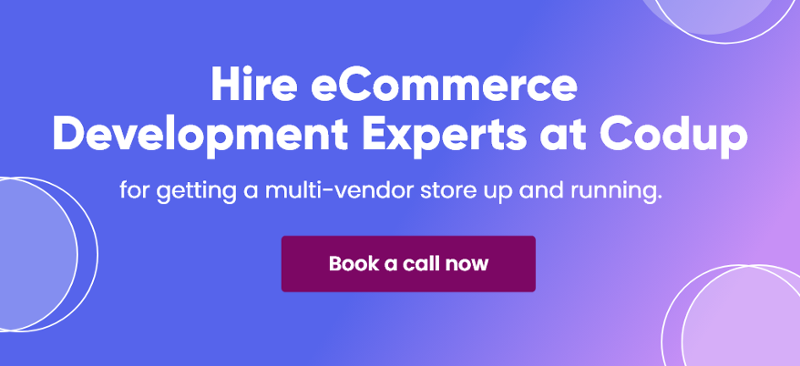
7 Best Headless eCommerce Platforms for 2023
1. Shopify Plus

Shopify Plus is a leading ecommerce development platform that provides businesses with a range of powerful features and tools to manage their online stores. One of the key features of Shopify Plus is its headless commerce functionality, which allows businesses to separate their front-end design from back-end infrastructure. This enables businesses to publish their storefront to any channel and make any device a platform for their brand.
With Shopify Plus’ headless commerce functionality, businesses can have total creative control over their storefronts and create a cohesive customer experience across all touchpoints. Custom storefronts can be created using business software and content management systems and can be delivered through devices like kiosks, wearables, vending machines, and billboards. In addition, Shopify Plus’ web app performs like a native mobile app, helping to speed up site performance.
Shopify Plus’ headless commerce functionality also integrates with a range of systems involved in a business, including ERP, PIM, CRM, CMS, and design frameworks. This allows for seamless management of inventory, orders, and customer data, as well as customization of storefronts, to meet specific business needs.
In terms of analytics tracking, Shopify Plus offers insights into conversions, average order value, store visits, and other key data. Integration with major marketplaces and third-party apps is also available, and customer support is provided via chat and email.
The cost of Shopify Plus starts at $2,000 per month, which includes a dedicated account manager, advanced security features, and access to enterprise-level tools and support. While there is no free trial offered for Shopify Plus, businesses can schedule a demo to learn more about the platform’s capabilities like shopify development services .
2. BigCommerce

BigCommerce is a popular eCommerce platform that provides businesses with powerful tools to manage their online stores. Its user-friendly content management system and drag-and-drop editor allow businesses to create custom digital storefronts easily. The headless commerce functionality of BigCommerce enables businesses to launch new products, add new features, and optimize their online stores in real time without requiring extensive coding knowledge.
BigCommerce stands out due to its open API and available SDKs, which make it an excellent choice for businesses looking to launch an integrated eCommerce experience. Its front-end frameworks allow businesses to customize their online store’s customer-facing part, and its intelligent storefront search, A/B testing capabilities, and machine learning-driven recommendations enable optimization across all channels.
BigCommerce’s digital experience platforms enable businesses to increase customer engagement through dynamic and personalized experiences, irrespective of the customer’s device or channel. The platform’s robust features include tools for managing customer relationships, order management, product catalogs, pricing, and promotions. Real-time analytics and tracking enable businesses to make data-driven decisions to improve their online stores and increase revenue.
For businesses seeking a comprehensive solution, partnering with a BigCommerce development company can further enhance the platform’s capabilities, ensuring a tailored and optimized online store experience.
3. Magento/Adobe Commerce

Magento Commerce is a powerful eCommerce platform that offers high levels of customization for developers to build applications tailored to their client’s needs. With its modular architecture, the platform allows for easy integration of new features and experimentation without causing disruptions to existing systems.
One of Magento’s key features is its robust inventory management system, which allows businesses to ship inventory to the right stores at the right time. The tool also provides accurate inventory tracking across multiple locations, including warehouses, stores, and drop shippers. With its analytics dashboard, businesses can visualize crucial data points like average order value, lifetime value, and retention rates, which can be exported directly to people’s inboxes.
Magento Commerce provides customer support via a ticket-based system to ensure quick and effective resolution of any issues. While pricing is available upon request, the platform’s versatility and scalability make it a top choice for businesses of all sizes.
4. Salesforce Commerce Cloud

Salesforce Commerce Cloud is a headless commerce platform that provides highly customizable front-end and back-end experiences through configurable APIs. The platform is designed to seamlessly integrate with Salesforce’s content management system, which personalizes customer interactions by leveraging data pulled from existing Salesforce databases.
While the platform offers numerous tools and integrations, it may not be as user-friendly for beginners compared to other options like Shopify. It may be better suited for businesses with dedicated development teams as mastering the multiple APIs can take some time.
Salesforce Commerce Cloud features include an order management platform, a wide range of integrations, options for both B2B and B2C eCommerce, the ability to integrate digital stores with physical touchpoints through the “endless aisle” feature, and seamless mobile optimization.
As for pricing, you must contact salesforce commerce cloud to know their offers.
5. Commercetools

Commercetools is an omnichannel eCommerce platform that provides a powerful and adaptable foundation for evolutionary eCommerce architecture. The platform leverages headless eCommerce technology to enable retailers to create engaging customer experiences across multiple channels and future-proof their business for emerging channels. Its cloud-based point-of-sale functionality is easy to deploy, and its cutting-edge API approach empowers retailers to create brand awareness by building engaging customer experiences across all touchpoints.
One of the platform’s standout features is its fully-enabled API platform, which enables businesses to manage data flow and user interaction between front-end clients and back-end ERP systems. The APIs cover all the necessary functionalities for running an eCommerce business, making it a user-friendly platform for businesses of all sizes.
it offers a complete set of features for tracking inventory, adjusting inventory levels, managing returns, and multi-store management. These features make it easy for businesses to keep track of their inventory, streamline their operations, and ensure that customers receive the products they need on time.
It also integrates smoothly with a range of popular tools, including Contentstack, CyberSource, Frontastic, and DXPs, and front-end CMS systems like Bloomreach and Adobe Experience Cloud. This makes it easy for businesses to customize and optimize their eCommerce platform to meet their unique needs.
Support is available 24/7 via a live chat feature or email. it ensures that businesses have access to the help they need to keep their eCommerce operations running smoothly.
Commercetools offers flexible pricing options that can be customized to meet the needs of businesses of all sizes. This means that businesses can choose the features they need and pay only for what they use, making Commercetools a cost-effective solution for eCommerce businesses.
6. Swell

Swell is a headless commerce platform that provides a host of features to enhance sales and improve the user experience for both B2B and B2C businesses. The platform has built-in subscription capabilities, wholesale and marketplace features, and a high level of customizability that makes it ideal for powering unique business models.
It’s site builder is user-friendly, providing users with the option to choose from a range of stylish ready-made themes or customize their own storefront without needing to know how to code. The platform also offers built-in promotional features that enable users to set up discounts, cross-sell and up-sell products, and generate custom coupons to encourage users to make more purchases.
Swell integrates with popular payment and marketing platforms such as Stripe, PayPal, and Mailchimp. The platform’s security features are multi-layered and fully encrypted, providing users with peace of mind while conducting business online.
However, Swell’s customer support and documentation could be more comprehensive compared to other headless commerce solutions — which could make it difficult for some users to navigate the platform.
Overall, Swell is a feature-packed headless commerce platform that offers a free option with limited functionality and effective marketing tools to help businesses increase the conversion rates. The Standard plan costs $299 per month, while larger, more established businesses might benefit from the $2000 per month Enterprise plan.
7. OroCommerce

OroCommerce is a flexible eCommerce platform with a focus on providing solutions for B2B businesses. However, the platform can be customized to suit any B2B, B2B2C, B2B2B, and B2C eCommerce needs.
One of the standout features of OroCommerce is its robust inventory management capabilities. It supports multi-website and multi-warehouse management, allowing you to efficiently manage your inventory across different locations. Additionally, you can personalize your catalogs and adjust pricing as needed to cater to your customer’s unique needs.
OroCommerce supports both headless eCommerce and traditional eCommerce, allowing you to take your brand to the web and mobile. The platform operates on an open-source philosophy, and its community of developers is constantly supporting each other to improve the platform.
One of the benefits of OroCommerce is its ability to keep your eCommerce and ERP systems in sync. The platform integrates seamlessly with popular CRM and ERP apps like Salesforce and SAP, streamlining your business processes and making it easier to manage your operations.
Pricing for OroCommerce is available upon request. The platform offers a range of features and functionalities that can be customized to meet the specific needs of your business.
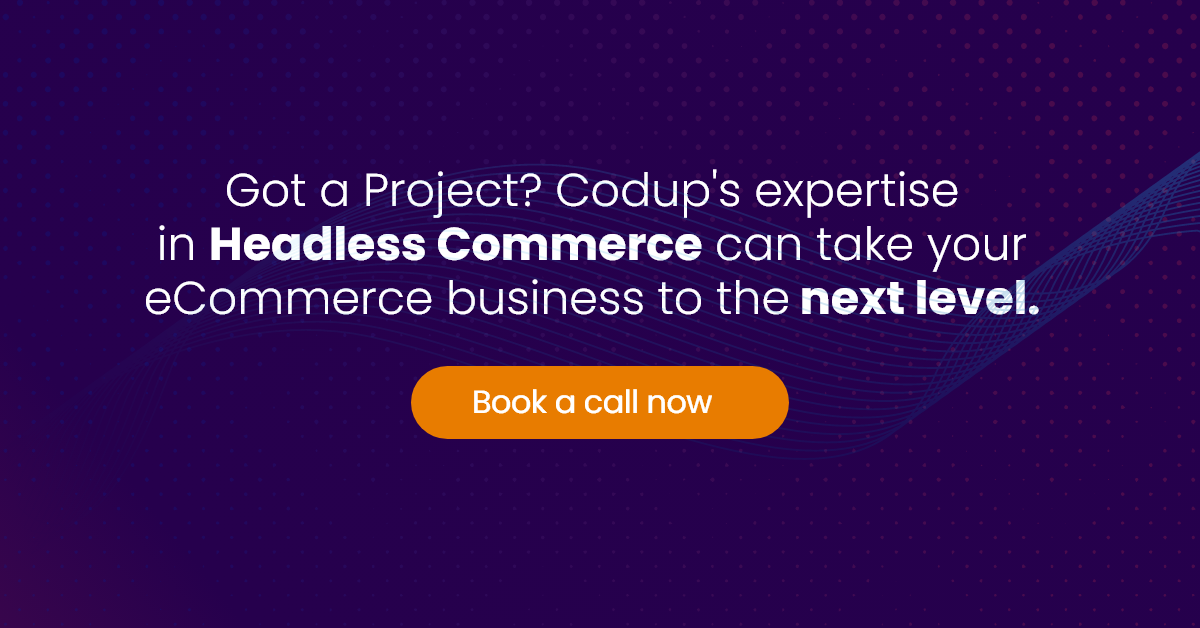
What’s Next?
It isn’t easy to tell which one is better, considering every business is different and has unique requirements to fulfill. So, it’s a good idea to consider each option and the range of possibilities each one of them can offer for your business. Headless commerce provides greater flexibility to the business on the technical side. Make sure to partner with the right eCommerce development service providers to shape experiences that drive revenue.

